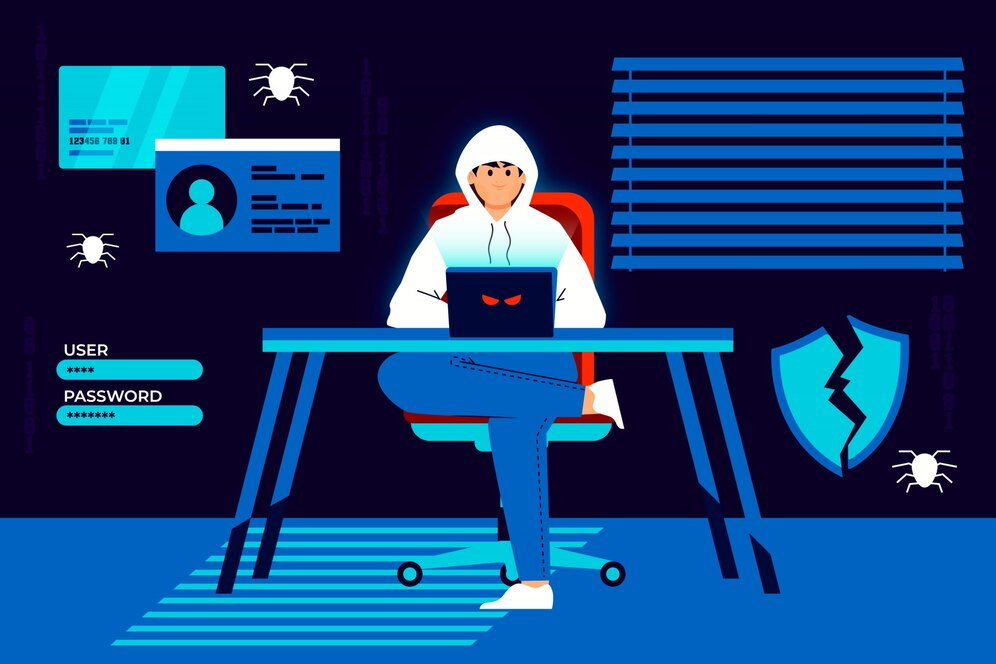Highlights
- Remote Access Trojans (RATs) allow hackers to control devices and steal sensitive data remotely.
- RATs often enter systems through fake email attachments, bundled downloads, or software vulnerabilities.
- Use anti-malware software, update it, and implement strong access controls to prevent RAT attacks.
- Keep your software and OS updated, and follow a zero-trust security model for added protection.
Did you consider how hackers can take over your computer without knowing? Remote Access Trojans (RATs) are sneaky programs that let hackers control your PC, steal your personal information, and cause serious trouble. The good news is that you can protect yourself with some simple steps.
In this blog, we’ll explain how to prevent a remote access trojan attack on your computer and keep your data safe.
What Are RATs In Computer Terms?
A Remote Access Trojan (RAT) is a type of malware that lets attackers take control of an infected device remotely.
RATs are particularly dangerous because they provide full access and control to attackers. They often sneak onto devices through deceptive methods like fake email attachments, drive-by downloads, or software that looks legitimate but is malicious.
Once installed, a RAT creates a backdoor in the system, allowing attackers to:
- Steal sensitive information.
- Install other harmful malware, like ransomware.
How Does RAT Work?
Unlike other malware, RATs let attackers control an infected device from afar. They often sneak onto your system disguised as email attachments, fake updates, or software downloads. Once installed, RATs create a secret backdoor, allowing attackers to:
- Steal personal data.
- Install more malware like ransomware.
- Spy on your activity.
How Do RATs Get Into Your System?

RATs use several tricks to fool users:
- Fake email attachments: Malicious files are disguised as harmless documents or images.
- Bundled downloads: They hide inside legitimate-looking software or updates.
- Exploiting vulnerabilities: Hackers secretly target weak spots in software or operating systems to install the RAT.
Once inside your system, RATs connect to a command-and-control (C&C) server controlled by the attacker. This server sends instructions to the RAT and collects stolen data. Attackers often:
- Use dynamic servers to avoid detection.
- Hide communications by encrypting data or making it look like normal traffic.
Types of Remote Access Trojans (RATs)
RAT (Remote Access Trojans) come in various forms, each tailored to specific malicious activities. Here’s an overview:
1. PC RATs
PC RATs give attackers control over personal computers, allowing them to see, hear, and interact with the device. The primary goal is often financial gain. For instance, ransomware usually includes a RAT as part of its “package” to maintain ongoing access to the infected computer.
2. Server RATs
Server RATs are designed to stay hidden on servers for long periods. Attackers use them to:
- Maintain control over the server.
- Distribute malware continuously.
- Preserve access for future attacks when it suits their goals.
3. Website RATs
Similar to PC and server RATs, website RATs (such as web shells) allow attackers to:
- Execute commands.
- Manipulate files.
- Infect other websites linked to the compromised one.
4. Mobile Phone RATs
Mobile RATs target smartphones, focusing heavily on banking apps. They enable attackers to:
- Steal sensitive banking data.
- Take control of banking apps without the user noticing.
For example, the Anubis Trojan began as banking malware but evolved to include full remote access capabilities.
How to Prevent Remote Access Trojan Attacks?

Here are 8 ways to prevent a RAT attack network:
- Install Anti-Malware Software
RATs can be tricky to detect and remove, but one of the best defenses is installing reliable anti-malware software. These programs are designed to spot and eliminate malicious software, including RATs. Keep the software up to date to defend against new threats.
- Strengthen Access Control
Strengthening access control makes it harder for unauthorized users to access your systems. Implement strong authentication methods, like two-factor authentication, and configure firewalls to limit access. These measures will reduce the damage a RAT can cause.
- Follow the Principle of Least Privilege
The principle of least privilege (POLP) ensures users have only the necessary access to perform their job. By limiting permissions and privileges, you can significantly reduce the risk of a RAT gaining full control of a device.
- Monitor for Unusual Application Behavior
RATs often connect to a remote server to receive commands, leading to abnormal network activity. Monitoring application behavior for unusual activities, such as connecting to unknown IP addresses or transferring excessive data, can help identify RATs early.
On a Windows PC, open Task Manager or use Activity Monitor on a Mac to check for unrecognized processes.
- Use an Intrusion Detection System
Intrusion detection systems (IDS) can help you continuously monitor network traffic. Host-based IDS (HIDS) monitors individual devices, while network-based IDS (NIDS) tracks overall network traffic.
Using both can create a comprehensive security system that can block intrusions that bypass firewalls or anti-malware defenses.
- Keep Your Software Updated
Attackers often exploit vulnerabilities in outdated operating systems and software. Keep your OS, browsers, and other commonly used programs updated to patch security flaws. Don’t forget to install updates for your antivirus and firewall software when available.
- Adopt a Zero-Trust Security Model
The zero-trust security model ensures that all users and devices are constantly authenticated before accessing a network. It prioritizes continuous monitoring, strict device control, and limited user access.
- Undergo Cybersecurity Training
Cybersecurity training helps individuals recognize and avoid common threats like suspicious links and phishing attacks. Regular training on how to spot malware and best practices for downloading software can help prevent RAT infections.
By training employees on how to avoid phishing and social engineering attacks, organizations can significantly reduce their risk of a RAT infection.
Conclusion
Knowing how to prevent a Remote Access Trojan is crucial for keeping your computer and personal information safe. By taking simple steps like installing anti-malware software, using strong passwords, and regularly updating your system, you can protect against these sneaky threats.
FAQs
What Is A Remote Access Trojan?
A Remote Access Trojan (RAT) is malicious software that allows cybercriminals to remotely control a computer or network without the user’s knowledge.
What Are Rats In Computer Terms?
RATs (Remote Access Trojans) are malware that enables attackers to gain unauthorized access to and control over a victim’s computer or device.
What Are Rat Self-Defense Techniques?
Rat self-defense techniques refer to methods rats use to protect themselves from predators, such as evading capture, using their agility, or employing defensive behaviors like biting or squealing.






